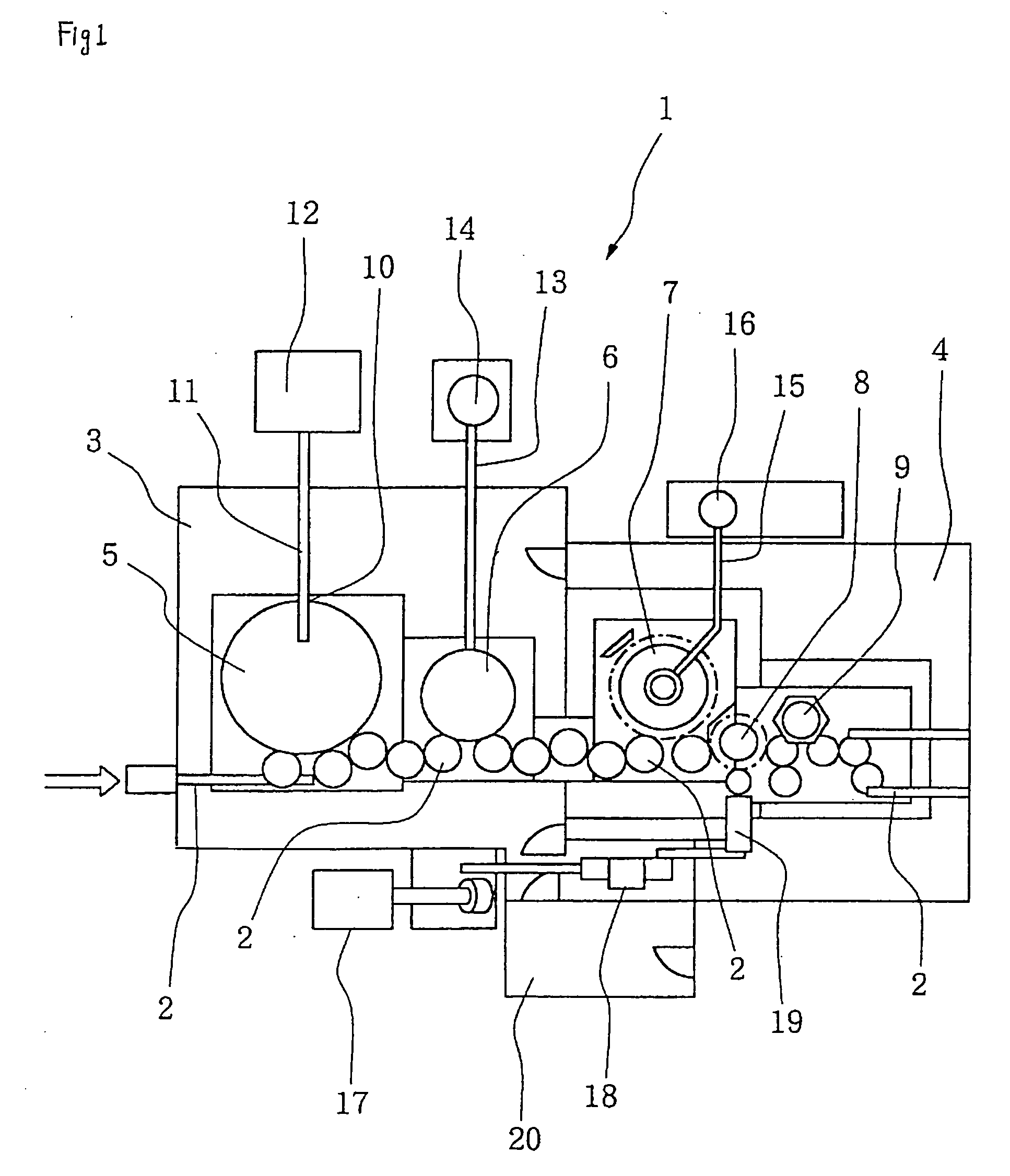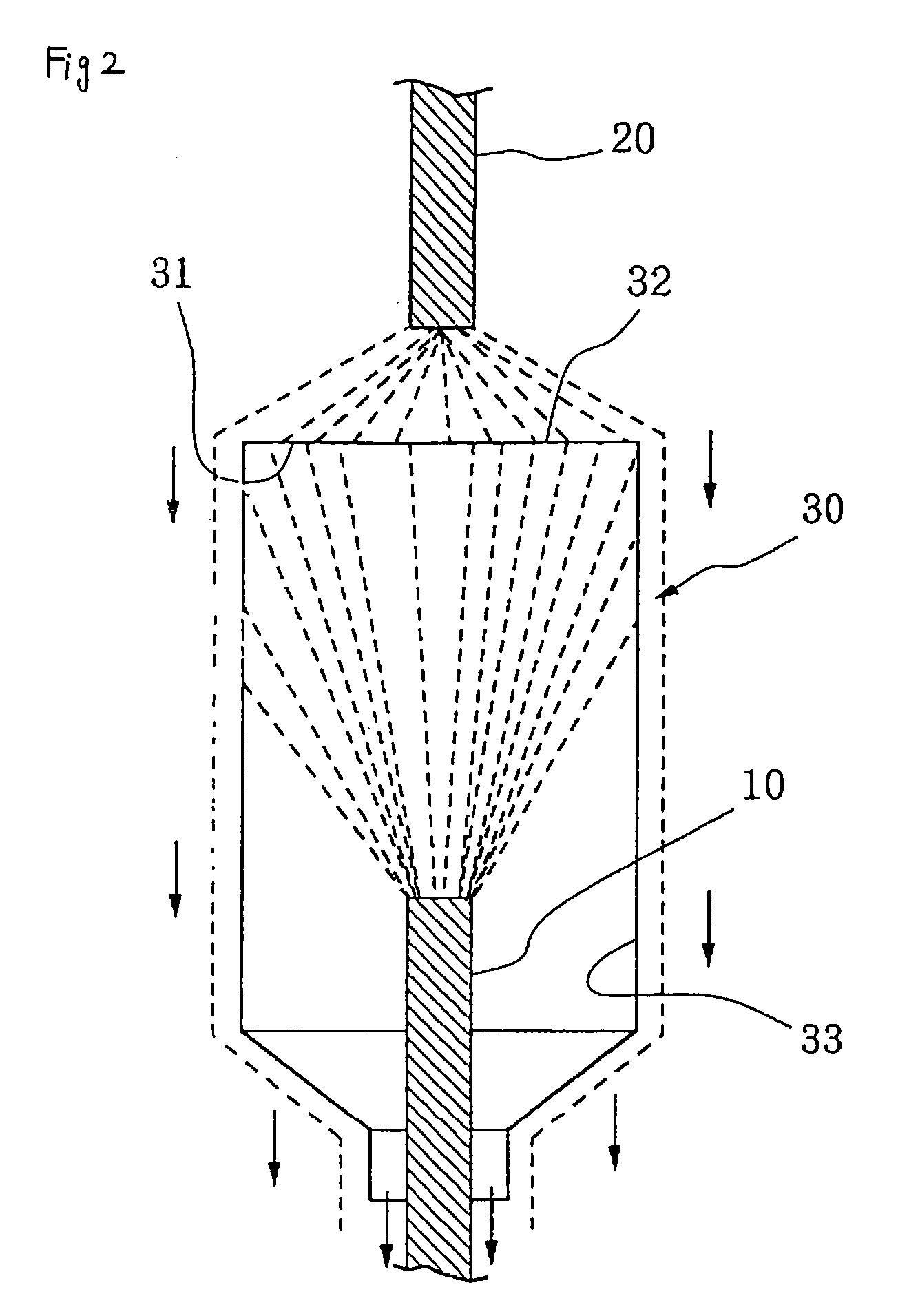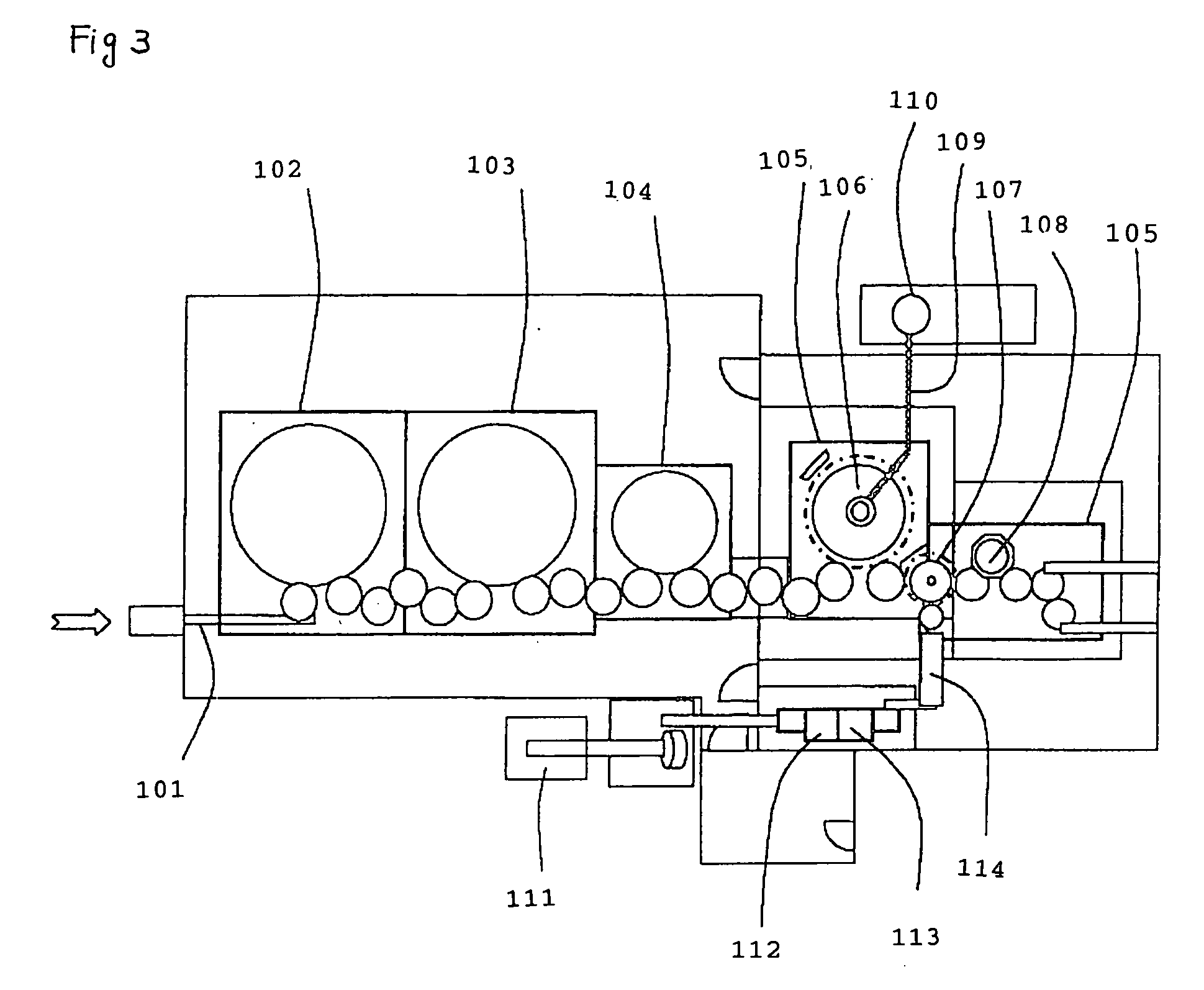Method and system for sterilizing food packaging container or food filling system
a technology of food packaging and charging system, which is applied in the direction of disinfection, water installations, construction, etc., can solve the problems of long sterilization time, difficult storage and handling, and higher cost, and achieve the effect of maximum sterilization time, less generation of pungent smell, and easy handling
- Summary
- Abstract
- Description
- Claims
- Application Information
AI Technical Summary
Benefits of technology
Problems solved by technology
Method used
Image
Examples
example 1
[0094] To demonstrate the effectiveness of the sterilizing method of the present invention, the sterilizing effect of the method on the internal surface of a PET bottle among the surfaces of food packaging materials, line pipes, instruments or chambers was examined as an example.
[0095] As a chlorine-based sterilizing agent, a pharmaceutical preparation (sterilizing agent) was prepared by diluting sodium hypochlorite with water and then adding a sufficient acid to the finally used solution to adjust its pH as described below.
[0096] A test microorganism was allowed to adhere to the internal surface of a PET bottle in an amount of 104 cfu / bottle (intended level), and the internal surface of the PET bottle was sterilized under test conditions described later. After sterilization, the bottle was charged with a medium (microbial spores; standard liquid medium), capped with an aseptic cap and stored for 1 week (microbial spores; standard liquid medium). After storage, the sterilizing effec...
example 2-1
[0098] To confirm the effectiveness of the sterilizing method of the present invention, the sterilizing effect of the method on the internal surface of a PET bottle as an object of sterilization was examined.
[0099] As at least one selected from hypochlorous acid and hypochlorite, sodium hypochlorite was diluted with water and then adjusted to pH 6.3.+-.0.3 with succinic acid as the pH adjusting agent. Among surfactants which can be added to foods, polyglycerol fatty ester was used as the surfactant and mixed therewith, and the mixed aqueous solution was used at the concentrations shown in Tables 3 and 4. The effective chlorine concentrations in Tables 3 and 4 were determined by the iodine method JIS K-0101. In the comparative example, a sterilizing agent consisting of only an aqueous sodium hypochlorite solution (pH 10) whose pH was not regulated with a pH adjusting agent.
[0100] As the test microorganism, Bacillus cereus spores were allowed to adhere to the internal surface of a PET...
example 2-2
[0101] As test microorganisms, microbial spores i.e. Bacillus circulans spores and fungal spore i.e. Chaetomium sp. ascospores were selected, and the same mixed sterilizing agent as in Example 1 was used to sterilize PET bottles under the test conditions shown in Table 4 below. After sterilization, the bottle with the Bacillus circulans spores was charged with a standard liquid medium, the bottle with Chaetomium sp. ascospores was charged with a potato dextrose standard liquid medium, and each bottle was capped with an aseptic cap and stored for 1 week, and then the medium was determined with the naked eye. The results of determination are shown in Table 4.
4TABLE 4 Sterilizing effect on Bacillus circulans spores, and sterilizing effect on Chaetomium sp. ascospores Number of polyglycerin microorganisms aliphatic Effective Test adhering to the surface ester chlorine Temperature Sterilization time (second) microorganism (cfu / cm2) (ppm) (ppm) (.degree. C.) 10 20 30 60 Bacillus circulans...
PUM
| Property | Measurement | Unit |
|---|---|---|
| temperature | aaaaa | aaaaa |
| pH | aaaaa | aaaaa |
| pH | aaaaa | aaaaa |
Abstract
Description
Claims
Application Information
 Login to View More
Login to View More - R&D
- Intellectual Property
- Life Sciences
- Materials
- Tech Scout
- Unparalleled Data Quality
- Higher Quality Content
- 60% Fewer Hallucinations
Browse by: Latest US Patents, China's latest patents, Technical Efficacy Thesaurus, Application Domain, Technology Topic, Popular Technical Reports.
© 2025 PatSnap. All rights reserved.Legal|Privacy policy|Modern Slavery Act Transparency Statement|Sitemap|About US| Contact US: help@patsnap.com



